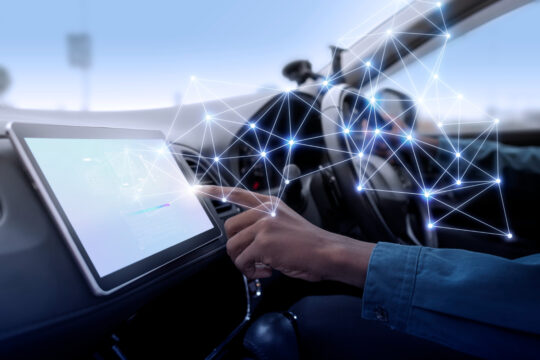
In today’s fast-paced and interconnected world, how we communicate has undergone a remarkable transformation. With advanced technology and digital innovations, our means of connecting with others have evolved beyond our wildest imaginations. From instant messaging to video conferencing, the future of communication holds endless possibilities. In this article, we will delve into the exciting developments that lie ahead, exploring how communication is set to become even more convenient, efficient, and immersive. So fasten your seatbelts as we take you on a journey into the future of communication, where the boundaries of time and distance are poised to be conquered.
Table of Contents
Seamless Connectivity with Modern Technology
In the modern era, seamless connectivity has become integral to our daily lives. With the help of advanced technology, we can now stay connected to people and devices wherever we go. The Internet of Things (IoT) has revolutionised communication, as everyday devices are now interconnected, creating a web of convenience and efficiency. The future promises interconnectedness like never before, from smart homes to wearable devices.
One of the most significant advancements in seamless connectivity is the rise of 5G technology. This fifth-generation wireless network promises lightning-fast speeds and almost zero latency, enabling us to download and upload data in the blink of an eye. With 5G, we can expect to see a wide range of applications, from autonomous vehicles communicating with each other to smart cities where devices can communicate and coordinate seamlessly. The possibilities are endless, and the future of communication is poised to be incredibly efficient and immersive.
In addition to 5G, artificial intelligence (AI) is another crucial component of seamless connectivity. AI-powered chatbots and virtual assistants have become common on smartphones and computers, making communication more convenient and personalised. These AI systems can understand and respond to human language, helping us with tasks, providing information, and acting as companions. We can expect even more integration with our daily lives as AI advances, creating a truly seamless and immersive communication experience.
Microsoft Teams Direct Routing: Empowering Businesses
Microsoft Teams Direct Routing is a groundbreaking solution that revolutionises how businesses communicate. By enabling organisations to integrate their existing phone systems with Microsoft Teams, Direct Routing empowers businesses to streamline their communication processes, increase productivity, and enhance collaboration.
One of the key benefits of Microsoft Teams Direct Routing is that it allows businesses to leverage their investments in legacy equipment and infrastructure. Instead of replacing their existing phone systems, organisations can connect them to Microsoft Teams, enabling employees to make and receive calls directly within the collaboration platform they are already using. This seamless integration eliminates the need for separate communication tools and ensures that employees can easily access all the features and functionality they require without any disruption.
Moreover, Microsoft Teams Direct Routing allows businesses to choose their telecommunications providers. This means that organisations are not tied to a single vendor, allowing them to select the best provider that aligns best with their specific needs, budget, and geographic requirements. This flexibility allows businesses to take full control of their communication infrastructure, ensuring they can negotiate the most competitive pricing and receive the highest quality of service.
In conclusion, Microsoft Teams Direct Routing is a game-changer for businesses seeking to enhance their communication capabilities. By seamlessly integrating existing phone systems with Microsoft Teams, Direct Routing empowers organisations to boost productivity, collaboration, and efficiency. With its flexibility and cost-effectiveness, Microsoft Teams Direct Routing is set to transform how businesses communicate, paving the way for an even more connected and innovative future.
The Age of Intelligent Communication Systems
The Age of Intelligent Communication Systems has arrived, ushering in an era of convenience and efficiency like never before. With artificial intelligence (AI) integration into communication technologies, our devices and platforms are becoming smarter and more intuitive, simplifying how we connect and interact with others. From voice-activated personal assistants to automated language translation, these intelligent systems are revolutionising how we communicate globally.
One exciting development in this age is the rise of virtual reality (VR) and augmented reality (AR) communication platforms. These immersive technologies allow individuals to interact with others in a virtual environment, breaking down geographical barriers and enabling collaboration and connection like never before. Imagine meeting with colleagues worldwide, feeling as if you are all sitting in the same room, even if you are physically thousands of miles apart. With the advancements in VR and AR, this scenario is becoming a reality, paving the way for a more connected and efficient future of business communication.
As we navigate this exciting new age, it is essential to consider the ethical implications of intelligent communication systems. With AI’s ability to collect and analyse vast amounts of personal data from users, concerns about privacy and security arise. Developers and policymakers must address these issues and ensure communication technologies protect user privacy and safeguard against possible exploitation. By striking the right balance between innovation and responsibility, we can truly unlock the full potential of intelligent communication systems and create a technologically advanced and socially responsible future.



